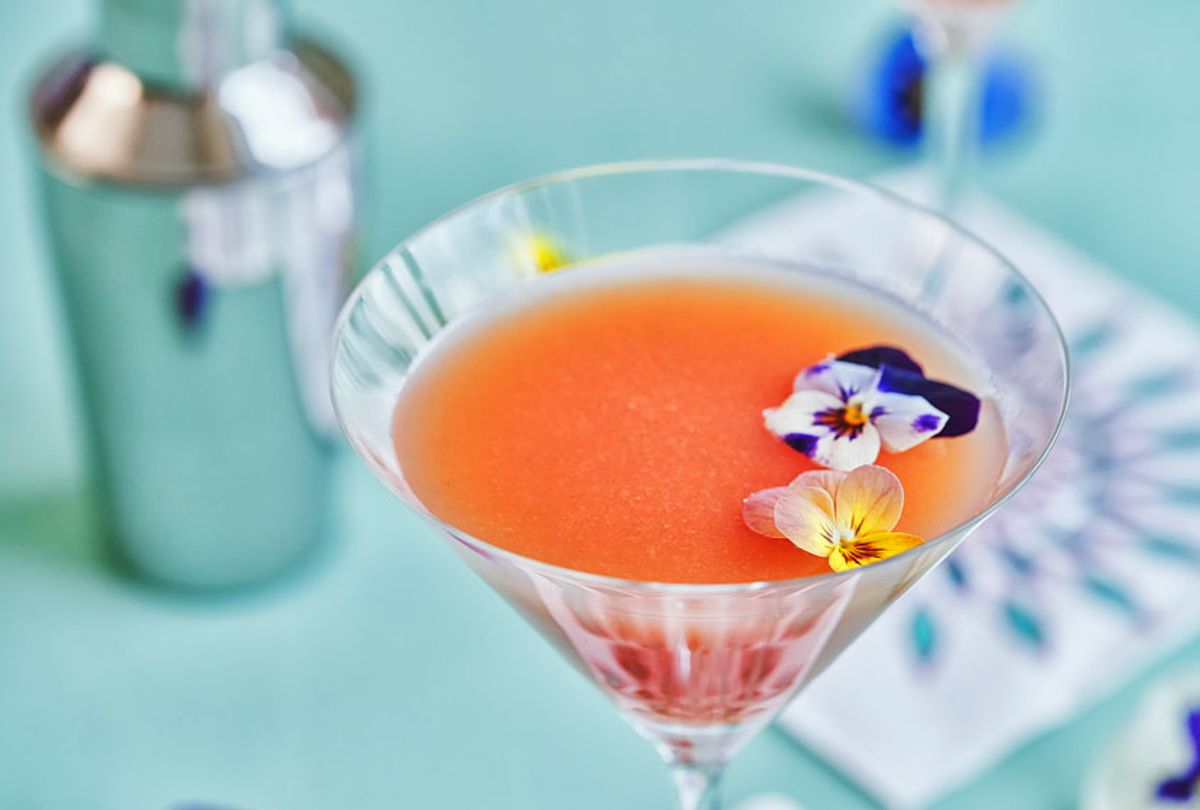A renewed interest in gardening has sprouted up as people are spending more time at home due to shelter-in-place orders. It seems to have originated from both a desire to be more self-sustaining, as well as the basic need for a hobby that takes one's mind off, you know, the global pandemic.
And for people who don't have yard space or a community garden, small herbs have long been a popular choice to exercise their green thumbs. This year, I'm adding a little color to the farm of potted herbs on my balcony by trying my hand at edible flowers.
In addition to being beautiful, many edible flowers — like herbs — can elevate food and drinks with unexpected pops of flavor.
Before I got started, I reached out to Shannon McGaughey, the co-owner of Vivian in Asheville, N.C. Their menus, both kitchen and cocktail, are filled with edible flowers. Here's what I've learned so far.
Decide which flowers you'd like to grow
Though I'm a major houseplant enthusiast, I'm still very much a rookie gardener when it comes to things you'd actually like to eat — but most edible flowers are low-maintenance enough that even beginners can look forward to a fruitful harvest. There are plenty of online seed catalogues to inspire you. I bought my seeds from Botanical Interests and have found their blog posts about gardening to be really helpful. McGaughey recommends Johnny's Selected Seeds (be sure to check out their Grower's Library for instructional diagrams and videos).
Your local nursery is also a great place to get supplies and information. Many are doing online ordering and curbside pick-up.
If you are low on space, consider varieties that take well to being potted, like nasturtiums, calendula, violets, and borage.
Also, consider what flavors or colors you're looking for in your kitchen.
"Chef uses flowers as garnishes whenever they're in season," McGaughey said. "To give something a pop of color you will see anything from wild bergamot, borage, calendula, marigold, alyssum, bachelor's button, nasturtium, johnny jump ups, and yarrow in his garnish station."
She continued: "He also uses a lot of herb blossoms to flavor dishes. A favorite is the garlic chive blossoms we grow at the house. They give the perfect, sharp garlicky pop to a dish. He'll also use dill, fennel, and sage blossoms for specific flavors."
Invest in some nice potting soil and pots — they don't need to be expensive, but make sure that there is a drainage hole — and research what kind of sunlight your flowers will need. Many culinary herbs and flowers do thrive in full sun (but will tolerate partial shade), so consider that when determining where to place your pots.
Many of these varieties also germinate relatively quickly, which means that you will see little green sprouts in a week or two, which is super encouraging! It's nice to see that things can and will still grow in these weird, weird times.
Once the flowers bloom, get familiar with their taste
The majority of edible flowers take about eight weeks to reach maturity. You'll be able to tell easily enough because they'll start blooming. At that point, McGaughey recommends taking some time to explore the tastes of your plants.
"When you encounter an edible flower, get to know it," she said. "Feel out its aroma, eat a petal, and then the whole flower and think about what type of liquor or cuisine has similar flavor profiles."
She then suggests packing flowers tightly into a mason jar and then pouring boiling water over them to make a tea.
"This is a great way to taste some secondary flavors," she said. "And then from there you can make syrups, jellies, broths, you name it."
Start incorporating flowers into your meals and cocktails
"Aside from using flowers for garnishes, we have quite a few go-to flower recipes," McGaughey said. "Chef likes to collect daylily pods when they first sprout and sauté them up to get a similar flavor to haricot verts. I've been making blossom jellies for accouterments for cheese boards — so far a violet & apple blossom jelly."
McGaughey also suggests playing with edible flowers behind the bar. She's made items like wisteria syrup, elderflower cordial, sweet pea blossom lemonade and rose cordial, all of which can be incorporated into cocktails or mocktails.
Make this recipe: Floral French 75
One of my favorite things to make with borage — which are gorgeous, blue-flowering herbs that have a delicate cucumber flavor — is a play on the traditional French 75 cocktail.
In a small saucepan, combine ½ cup of roughly chopped borage blossoms, 1 cup of sugar and 1 cup of water. Bring the mixture to a boil, stir until the sugar has dissolved, then immediately reduce the heat. Allow the mixture to gently simmer for about fifteen minutes, then pull the pan off the heat, allowing the flowers to steep for at least an hour.
Strain the mixture. This is your borage simple syrup. There will be extra after making this cocktail, which can be stored in an airtight container in the refrigerator for up to two weeks.
Combine ½ an ounce of lemon juice,1 ounce of gin, and ½ an ounce of borage simple syrup in a cocktail shaker filled with ice. Vigorously shake then strain into a champagne flute or (my preference) a coupe. Top off the cocktail with 2 ounces of Champagne. Garnish, obviously, with a borage blossom.

Shares